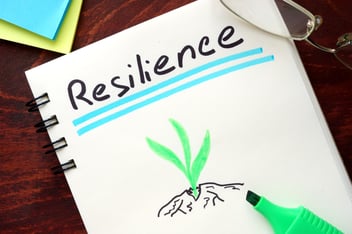
Many organizations consider innovation a critical strategy for growth. Many countries prioritize innovation through products, services, and technology to stimulate productivity and economic growth. But there's a hidden side to productivity you may not have considered, and that's how does innovation increase productivity on teams?
How does innovation increase productivity on teams?
In her book, The Progress Principle, creativity and innovation researcher Teresa Amabile shares the following:
Written by Janice Francisco
"A sense of making progress on meaningful work was the single most important factor in igniting creativity, satisfaction, and productivity among employees—far more than factors like monetary compensation, praise, or camaraderie.”1
Teams engaged in innovation activities and who understand the greater purpose of their work are more productive when they have a sense of how their work is progressing.
So how does a team understand how their work is progressing?
Reflective thinking is the key - to their achievements and failures, what did and didn't work, and what needs improvement.
Where is your team's focus?
What happens when your team completes a task? Do they rush to the next thing to do?
In my experience, reflective thinking isn't a common practice on most teams; which is unfortunate for two reasons:
First, when we don't take the time to reflect on accomplishments, we can get lost in the weeds and stray from the greater purpose of our work. We fall into the trap of being busy but not productive.
Secondly, when we take the time to reflect on progress, it becomes possible to learn how to do things better, faster, and more simply, which is why we innovate in the first place.
If your goal is outcome-driven innovation, reflecting on progress is critical to continuous learning, continuous improvement and innovation.
If your goal is outcome-driven innovation reflecting on progress opens up the possibility of becoming more productive. Reflecting on progress is critical to continuous learning, continuous improvement and innovation.
How to reflect on your progress
There's a simple way to help your team reflect on progress. It involves mindfulness and the use of a tool called the Learning Cycle2.
Mindfulness is an essential creativity skill for engaging in innovation productively.
Mindfulness enables heightened awareness to make sense of complex issues and respond more effectively to a situation. It's critical to our ability to diagnose problems and make choices about the next steps.
The Learning Cycle is a tool that gives you a structure for engaging mindfully in reflective thinking. It's available in the FourSight toolset we teach to enhance collaboration and innovation.
When you think about how it unfolds as a process, innovation is very much about learning as you go. When you don't regularly assess what you're learning as you move through the innovation process, you miss opportunities for the individual, team and organizational learning that's so essential for building knowledge and mastery.
The Learning Cycle asks four simple and powerful questions:
- What's working well?
- What should we be doing differently?
- What have we learned or relearned?
- What learnings shall we apply next time?

Every person on the team contributes ideas to help answer each of the first three questions. The protocol is that all ideas are welcome. Once everyone contributes ideas to the first three questions, the team reviews and interprets their collective experience and answer the final question.
Boost your team's productivity with this habit
When we teach the Learning Cycle to the teams we work with, they quickly appreciate it and the learning process it supports. They like having a structure and discipline to make sense of the progress they're making. They value the opportunity to connect with peers on a deeper level to sanity-check their experiences, find answers to questions that are getting in the way of progress, and work through issues that could take them off course.
Many of the teams we work with consider the time and space they set aside for going through these questions their "learning circle" and protect the commitment to run these sessions.
In reality, the time commitment isn't big. In fact, it's small, given the impact it has. Often a learning cycle can be completed in as few as 15 or 30 minutes. It doesn't have to take long.
We've successfully used the Learning Cycle tool on innovation, project, functional and operational teams. Bring it out when you complete significant work or transition through a project phase. And, if your team is doing project work, you can use the Learning Cycle to guide project retrospectives and post-mortems as you move through the project management process, complete a deliverable or reach a milestone.
By developing a habit of being mindful to reflect on and make sense of your progress, you find opportunities to appreciate how far you've come.
Reflective thinking focused on accomplishments allows you to course-correct in ways that will save you effort in the future.
And, as Amabile's research has shown, recognition of progress also contributes towards more creative, happy, and productive workplaces.
References
1. Amabile, T.M., Kramer, S.J. (2011). The progress principle: Using small wins to ignite joy, engagement and creativity at work. Harvard Business Review Press: Boston.
2. The Learning Cycle comes from the FourSight LLC Toolset and is adapted from Gaw (1979) and Kolb D.A & Fry R. (1975).
-Nov-07-2022-09-25-54-1140-PM.png)

